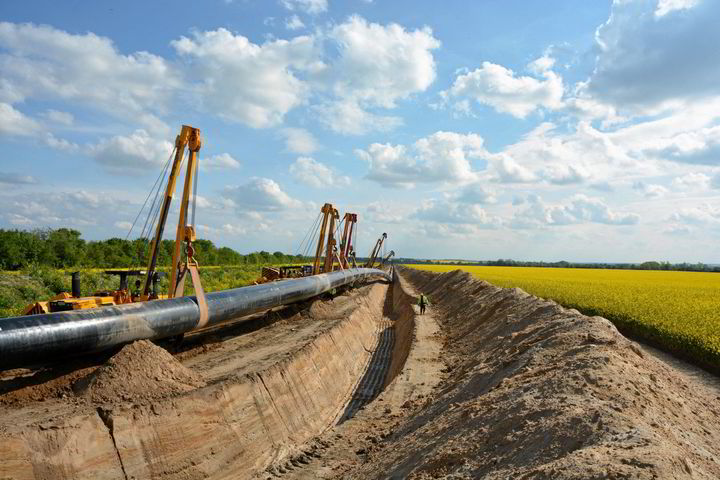Germany could spend billions of euros to convert pipeline for Russian gas imports to carry hydrogen: report

The CEO of SEFE, a former subsidiary of Gazprom that was nationalised and renamed by the German government in 2022, has told newswire Reuters that daughter company Gascade could spend “low single-digit billion euros” on converting gas pipelines to hydrogen.
Gascade is currently developing “Flow”, a project which includes plans to convert the European Gas Pipeline Link (EUGAL) — a high-pressure 480km transmission pipeline in Germany built to carry Russian gas from the NordStream landing point on the Baltic Sea coast to the country’s south — to carry hydrogen.
Russia ceased filling NordStream in 2022, cutting off gas supply to EUGAL only a year after it had brought its full capacity on line.
Gascade has since announced plans to convert EUGAL to carry H2 in 2025, signing an agreement with developer HH2E to link up its 50MW green hydrogen project in Lubmin to the pipeline at the end of that year.
Flow was included in the European Commission’s sixth list of Projects of Common Interest — for cross-border energy infrastructure that could be in line for accelerated permitting and access to funding from the EU’s Connecting Europe Facility.
Gascade had also this month received EU approval for state aid for Aquaductus, a 200km pipeline to transport hydrogen produced at an offshore wind farm in the German North Sea to shore by 2030.
Article continues below the advert
Aquaductus was notified as an Important Project of Common European Interest (IPCEI), effectively a green light for state aid. The German government confirmed last week that it would cover 100% of the subsidies for this offshore pipeline, in contrast to 70% for other IPCEI hydrogen pipelines, which would receive the remaining 30% of state aid from regional governments.
SEFE CEO Egbert Laege also told Reuters that the company could spend around €500m on converting an unspecified proportion of its 5.6 billion cubic metres of gas storage capacity to store H2.
“The exact investment calculation is not yet available, but we are talking about sums in the mid three-digit million-euro range for converting some of our gas storage sites to hydrogen,” he said.
Laege suggested that an investment decision on storage would be made this year, while the decision to invest in Flow is more likely to be made between 2025 and 2028.
German utility EWE earlier this month joined the Flow project, with an eye to linking its salt cavern storage located at Rüdersdorf near Berlin to the network. The company has already started to operate a small test cavern storing hydrogen in 2023 at the site, with a separate IPCEI for converting a natural gas storage cavern at its Huntorf site in northwestern Germany.
Separately, Dutch gas pipeline operator Gasunie’s German subsidiary and salt cavern storage operator Storag Etzel has launched a feasibility study for the development of 1TWh of hydrogen storage capacity at a salt dome in Wilhelmshaven, northwest Germany
The two companies noted that the storage would be located near the hydrogen hub at the port of Wilhelmshaven and Gasunie’s Hyperlink pipeline, which was also awarded IPCEI status last week.





